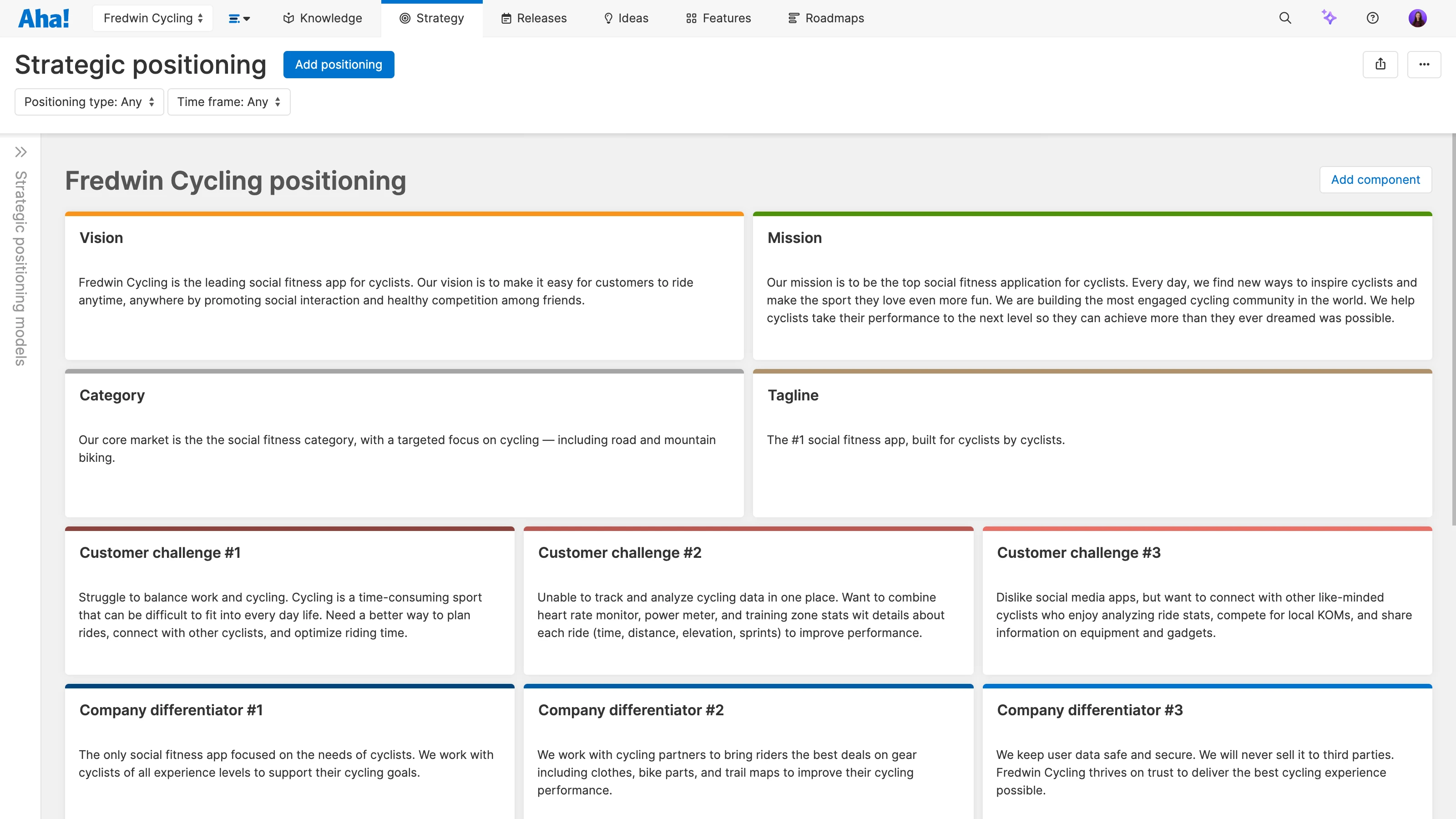Introduction to marketing strategy
Setting a marketing strategy is essential to keeping your team in sync and performing well. It aligns the entire company around shared market, business, and product assumptions. This is key to launching campaigns and promotional activities that effectively engage potential customers, drive revenue, build brand awareness, and strengthen the relationship with existing customers.
Your strategy sets the direction for your everyday marketing activities. This keeps the team focused on what matters most — so you can successfully acquire, keep, and grow customers.
The key components of marketing strategy
A marketing strategy is based on deep research and analysis, factoring what can positively or negatively impact your business success. This research forms the foundation of your overall marketing plan and sets the direction for how to achieve your company’s vision, mission, and business goals.
The table below defines the key components of a marketing strategy.
Component | Purpose |
Marketing goals | Define a set of time-bound and measurable marketing goals that support your overarching business goals. |
Marketing initiatives | Capture the high-level efforts needed to achieve your marketing goals and the timeline for completing them. |
Target market | Identify segments of customers who share common characteristics and the marketing approach for each one. |
Market analysis | Determine the external market factors that could impact the success of your business. |
Make better marketing decisions based on your strengths, weaknesses, opportunities, and threats. | |
Positioning strategy | Articulate where your product fits in the market, what sets it apart, and why customers should care about it. |
Marketing mix | Define the right marketing mix to promote your product (often using the 9Ps model). |
Guide the implementation and delivery of a marketing program or campaign by defining the goals, customer truths, and brand voice. | |
Buyer personas | Create a detailed description of your ideal target customer so you can develop relevant market campaigns and content. |
Competitor analysis | Identify other companies competing in your market and rank them based on their strengths and weaknesses. |
A creative brief — like the one in Aha! Roadmaps — helps you identify the goals, customer truths, and brand voice for a program or project.
How to set a marketing strategy
Defining the strategy should happen before the marketing team begins the more tactical work. At the highest level, the CMO or VP of marketing typically drives the marketing strategy, but this depends on the organization. Team members may also help with market research, data analysis, and other work that informs the strategy.
Today, many teams use purpose-built marketing planning software to define their long-term goals and capture information on customers and the market. This creates a more agile approach to marketing and saves you time updating your strategy as market and business conditions change. It also ensures that your marketing activities stay closely aligned with the company’s overall objectives. If you are not yet ready to use a web-based tool to collaborate on your marketing plans in real time, this guide provides a useful library of free marketing strategy templates.
Plan, collaborate, and launch — all in one tool. Try Aha! free for 30 days.
